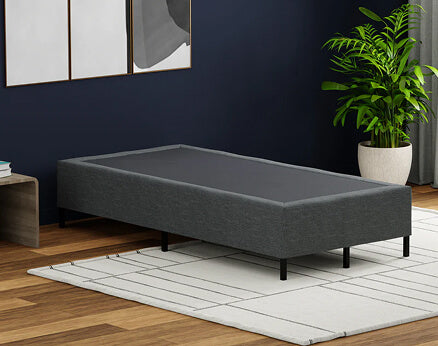Your mattress is an investment in comfort and health, so it's frustrating when unsightly yellow stains appear. Understanding what causes yellow stains on a mattress can help you prevent them and keep your bed fresh and clean. Let's dive into the common causes of these stains and how to tackle them effectively.
Common Causes of Yellow Stains on Mattresses
Various factors can cause yellow stains on mattresses, and knowing the main cause is the first step in preventing and removing them.
Sweat and Body Oils

Yellow stains on a mattress often result from accumulated sweat. Throughout the night, your body secretes sweat and oils. Over time, these substances seep through your sheets and into the mattress, leading to yellow discoloration. This buildup stains and creates a breeding ground for bacteria and dust mites, further affecting your health and comfort.
Urine (Human and Pet)
Accidents happen, whether from children or pets. Urine stains can quickly turn yellow if not cleaned promptly. The moisture seeps into the mattress fibers. If not properly cleaned, it can result to persistent stains and unpleasant odors. Also, lingering urine moisture can cause mold growth, worsening the situation.
Vomit
Vomit is another culprit behind yellow stains. If not cleaned immediately, it can leave behind stubborn yellow or brown marks. Vomit can leave an odor that's hard to eliminate. This makes it crucial to address the stain as soon as possible.
Rust
Moisture from sweat or spills can reach the coils inside spring or hybrid mattresses, causing them to rust. Rust stains are usually darker with an orange tinge. They indicate that the metal components of your mattress are beginning to deteriorate.
Natural Oxidation
As mattresses age, they undergo a natural process called oxidation. This causes the materials inside to break down and turn yellow. This type of staining is not harmful. However, it is permanent and indicates that your mattress may be nearing the end of its lifespan.
How to Prevent Yellow Stains on Your Mattress
Preventing yellow stains on your mattress involves some proactive measures:
- Use a Mattress Protector: A good-quality mattress protector is a barrier against liquids, body oils, and dust mites. It's easy to keep your mattress clean and extend its life.
- Regular Cleaning: Regularly washing your sheets, pillowcases, and pillows helps prevent sweat and oils from reaching the mattress. Also, consider vacuuming your mattress every few months to remove dust and debris.
- Avoid Food, Drinks, and Pets in Bed: Eating, drinking, and allowing pets on your bed can lead to spills and accidents. Keeping these activities out of the bedroom can significantly reduce the risk of stains.
How to Remove Yellow Stains from Mattress

If you already have yellow stains, don't worry-there are ways to remove them:
- Sweat and Body Oil Stains: Blend baking soda with hydrogen peroxide and a small amount of dish soap. Spray the solution on the stained area, let it sit for 15 minutes, and then wipe it clean.
- Urine Stains: For fresh stains, blot the area to remove excess liquid, then spray a mixture of equal parts water and vinegar. Sprinkle baking soda over the area, let it sit for several hours, and vacuum it up.
- Vomit Stains: Start by removing as much of the vomit as possible. Next, clean the area with warm water and a gentle detergent. Afterward, apply a vinegar solution to sanitize and eliminate odors.
- Rust Stains: These are tougher to deal with. The best prevention is keeping your mattress dry. However, it might be time to consider a new mattress if you notice rust.
Sleeping Safe: Are Yellow Stains a Health Risk?
While some yellow stains, like those from oxidation, are harmless, others can indicate underlying issues like mold or bacteria. If your mattress has a musty smell or you experience allergy symptoms like coughing or sneezing, it may be time to replace it. Your health and comfort should be a priority; sometimes, that means investing in a new mattress.
Don't Let Yellow Stains Ruin Your Sleep
While yellow stains can be stubborn, they don't have to ruin your sleep. By understanding what causes yellow stains on a mattress and following the tips outlined above, you can keep your bed fresh, clean, and inviting. Remember, regular maintenance and prompt action are vital to preserving the life of your mattress.
If your mattress has seen better days, it might be time to invest in a new one. Explore our range of products at Blissful Nights to find the perfect mattress that offers comfort and cleanliness.Frequently Asked Questions
How often should I replace my mattress?
It's recommended to replace your mattress every 7 to 10 years, depending on its condition. It might be time for a new mattress if you notice persistent yellow stains, sagging, or discomfort.
Can I remove deep yellow stains from a mattress?
Deep yellow stains, especially from urine or sweat, can be challenging to remove completely. However, using a mixture of hydrogen peroxide, baking soda, and dish soap can help lighten these stains.
How can I protect my pillows from yellowing?
Use pillow protectors and wash your pillowcases regularly to prevent your pillows from yellowing. Also, wash your pillows themselves a few times a year.






















Leave a comment
This site is protected by hCaptcha and the hCaptcha Privacy Policy and Terms of Service apply.